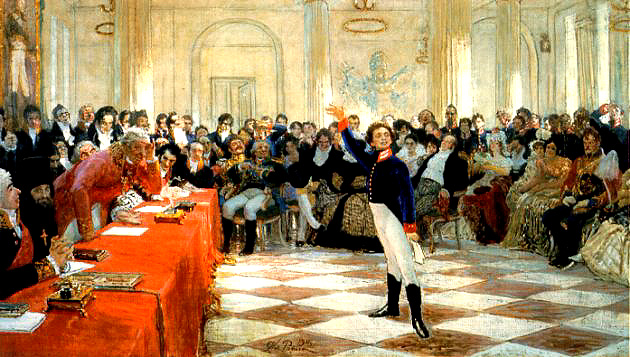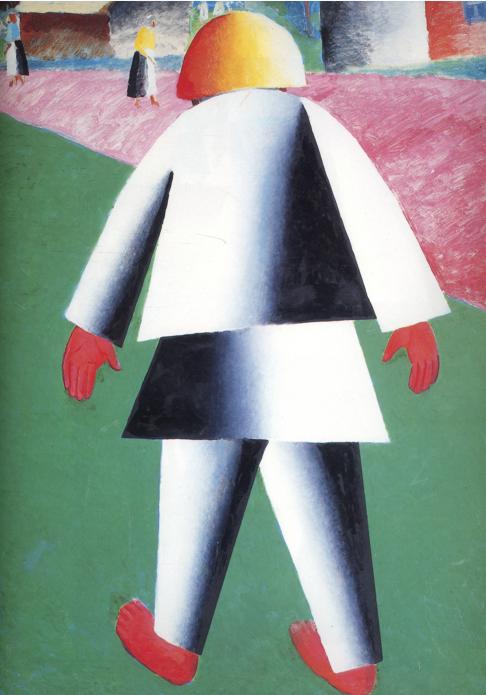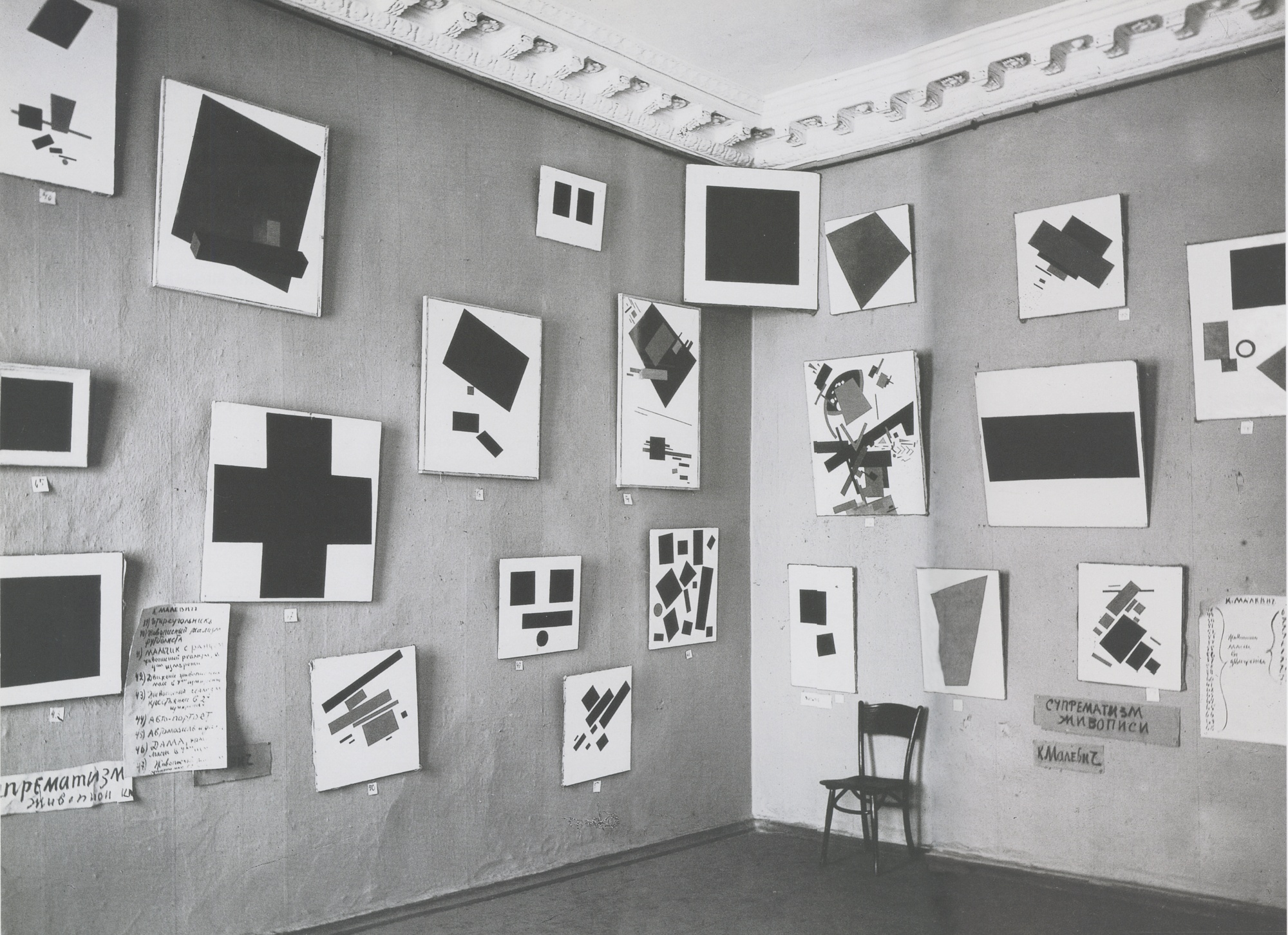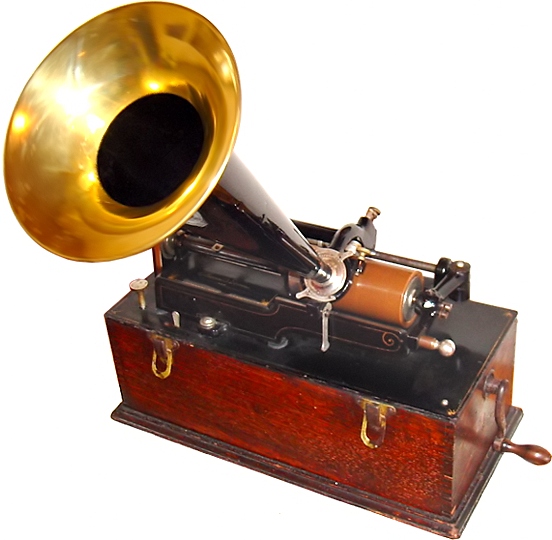|
The Poem Of The End
The ''Poem of the End'' (russian: поэма конца, 'poema kontsa') is the name of two poems by Russian poets of the early 20th century. Poem of the End (usually given in English without an article) is the best known poem by Russian poet Vasilisk Gnedov. One of the most radically experimental poets of Russian Futurism, Gnedov's Poem of the End consisted of its title alone on a blank page. Gnedov would perform the poem on stage using a silent gesture. The collection from which it came, Death to Art (1913), contained fifteen very short poems that gradually reduced in size from one line, to one word, one letter, and ultimately to Poem of the End. The poem has been compared to Kazimir Malevich's painting Black Square (1915), John Cage's silent composition 4'33" (1952), and to Minimalism in general. A "recreation" of the performance of the poem was realized in 2007 by Miguel Molina, and released on cd by Recommended Records (ReR Megacorp) in a limited edition of 150 in 2009. The ... [...More Info...] [...Related Items...] OR: [Wikipedia] [Google] [Baidu] |
Poem
Poetry (derived from the Greek ''poiesis'', "making"), also called verse, is a form of literature that uses aesthetic and often rhythmic qualities of language − such as phonaesthetics, sound symbolism, and metre − to evoke meanings in addition to, or in place of, a prosaic ostensible meaning. A poem is a literary composition, written by a poet, using this principle. Poetry has a long and varied history, evolving differentially across the globe. It dates back at least to prehistoric times with hunting poetry in Africa and to panegyric and elegiac court poetry of the empires of the Nile, Niger, and Volta River valleys. Some of the earliest written poetry in Africa occurs among the Pyramid Texts written during the 25th century BCE. The earliest surviving Western Asian epic poetry, the ''Epic of Gilgamesh'', was written in Sumerian. Early poems in the Eurasian continent evolved from folk songs such as the Chinese ''Shijing'', as well as religious hymns (the Sanskrit ' ... [...More Info...] [...Related Items...] OR: [Wikipedia] [Google] [Baidu] |
Russian Poet
This is a list of authors who have written poetry in the Russian language. Alphabetical list A B C D E F G I K L M N O P R S T U V Y Z Sources See also * List of Russian architects * List of Russian artists * List of Russian explorers * List of Russian inventors * List of Russian-language novelists * List of Russian-language playwrights * List of Russian-language writers * Russian culture * Russian poetry * Russian literature * Russian language * :Russian poets {{DEFAULTSORT:List Of Russian Language Poets Russian Poets A poet is a person who studies and creates poetry. Poets may describe themselves as such or be described as such by others. A poet may simply be the creator (thought, thinker, songwriter, writer, or author) who creates (composes) poems (oral t ... Russian literature-related lists de:Liste russischsprachiger Dichter ... [...More Info...] [...Related Items...] OR: [Wikipedia] [Google] [Baidu] |
Vasilisk Gnedov
Vasily Ivanovich Gnedov ( rus, Васи́лий Ива́нович Гне́дов, p=vɐˈsʲilʲɪj ɪˈvanəvʲɪdʑ ˈɡnʲedəf, a=Vasiliy Ivanovich Gnyedov.ru.vorb.oga), better known by the pen name Vasilisk Gnedov ( rus, Васили́ск Гне́дов, p=vəsʲɪˈlʲizɡ ˈɡnʲedəf, a=Vasilisk Gnyedov.ru.vorb.oga; 3 March 1890 — November 20, 1978), was one of the most radically experimental poets of Russian Futurism, though not as prolific as his peers. Gnedov is chiefly known for his '' Poem of the End'', which consisted of its title alone on a blank page, and which the poet performed on stage using a silent gesture. The collection from which it came, ''Death to Art'' (1913), contained fifteen very short poems that gradually reduced in size from one line, to one word, one letter, and ultimately to ''Poem of the End''. The poem has been compared to Kazimir Malevich's painting ''Black Square Black is a color which results from the absence or complete absorption of ... [...More Info...] [...Related Items...] OR: [Wikipedia] [Google] [Baidu] |
Russian Futurism
Russian Futurism is the broad term for a movement of Russian poets and artists who adopted the principles of Filippo Marinetti's "Manifesto of Futurism," which espoused the rejection of the past, and a celebration of speed, machinery, violence, youth, industry, destruction of academies, museums, and urbanism; it also advocated the modernization and cultural rejuvenation. Russian Futurism began roughly in the early 1910s; in 1912, a year after Ego-Futurism began, the literary group "Hylea" - also spelt "Guilée" and "Gylea" – issued the manifesto ''A Slap in the Face of Public Taste''. The 1912 movement was originally called Cubo-Futurism, but this term is now used to refer to the style of art produced. Russian Futurism ended shortly after the Russian Revolution of 1917, after which former Russian Futurists either left the country, or participated in the new art movements. Notable Russian Futurists included Natalia Goncharova, Mikhail Larionov, David Burliuk, Kazimir Malevic ... [...More Info...] [...Related Items...] OR: [Wikipedia] [Google] [Baidu] |
Kazimir Malevich
Kazimir Severinovich Malevich ; german: Kasimir Malewitsch; pl, Kazimierz Malewicz; russian: Казими́р Севери́нович Мале́вич ; uk, Казимир Северинович Малевич, translit=Kazymyr Severynovych Malevych ., group=nb (Запись о рождении в метрической книге римско-католического костёла св. Александра в Киеве, 1879 год // ЦГИАК Украины, ф. 1268, оп. 1, д. 26, л. 13об—14. – 15 May 1935) was a ... [...More Info...] [...Related Items...] OR: [Wikipedia] [Google] [Baidu] |
Black Square (painting)
''Black Square'' (also known as ''The Black Square'' or ''Malevich's Black Square'') is an iconic painting by Kazimir Malevich. The first version was done in 1915. Malevich made four variants of which the last is thought to have been painted during the late 1920s or early 1930s. ''Black Square'' was first shown in The Last Futurist Exhibition 0,10 in 1915. The work is frequently invoked by critics, historians, curators, and artists as the "zero point of painting", referring to the painting's historical significance and paraphrasing Malevich. History The Black Square first appeared as part of a design for a stage curtain in the 1913 Russian Futurist/Cubo-Futurist opera '' Victory over the Sun'' by Velimir Khlebnikov, Aleksei Kruchyonykh, and Mikhail Matyushin, for whom he did the costume and stage designs. Malevich painted his first ''Black Square'' in 1915. He made four variants, of which the last is thought to have been painted during the late 1920s or early 1930s, despite ... [...More Info...] [...Related Items...] OR: [Wikipedia] [Google] [Baidu] |
John Cage
John Milton Cage Jr. (September 5, 1912 – August 12, 1992) was an American composer and music theorist. A pioneer of indeterminacy in music, electroacoustic music, and non-standard use of musical instruments, Cage was one of the leading figures of the post-war avant-garde. Critics have lauded him as one of the most influential composers of the 20th century. He was also instrumental in the development of modern dance, mostly through his association with choreographer Merce Cunningham, who was also Cage's romantic partner for most of their lives. Cage is perhaps best known for his 1952 composition ''4′33″'', which is performed in the absence of deliberate sound; musicians who present the work do nothing aside from being present for the duration specified by the title. The content of the composition is not "four minutes and 33 seconds of silence," as is often assumed, but rather the sounds of the environment heard by the audience during performance. The work's challenge t ... [...More Info...] [...Related Items...] OR: [Wikipedia] [Google] [Baidu] |
Minimalism
In visual arts, music and other media, minimalism is an art movement that began in post–World War II in Western art, most strongly with American visual arts in the 1960s and early 1970s. Prominent artists associated with minimalism include Donald Judd, Agnes Martin, Dan Flavin, Carl Andre, Robert Morris, Anne Truitt and Frank Stella. The movement is often interpreted as a reaction against abstract expressionism and modernism; it anticipated contemporary postminimal art practices, which extend or reflect on minimalism's original objectives. Minimalism in music often features repetition and gradual variation, such as the works of La Monte Young, Terry Riley, Steve Reich, Philip Glass, Julius Eastman and John Adams. The term ''minimalist'' often colloquially refers to anything or anyone that is spare or stripped to its essentials. It has accordingly been used to describe the plays and novels of Samuel Beckett, the films of Robert Bresson, the stories of Raymond Carver, an ... [...More Info...] [...Related Items...] OR: [Wikipedia] [Google] [Baidu] |
Phonograph Cylinder
Phonograph cylinders are the earliest commercial medium for recording and reproducing sound. Commonly known simply as "records" in their era of greatest popularity (c. 1896–1916), these hollow cylindrical objects have an audio recording engraved on the outside surface, which can be reproduced when they are played on a mechanical cylinder phonograph. In the 1910s, the competing disc record system triumphed in the marketplace to become the dominant commercial audio medium. Early development In December 1877, Thomas Edison and his team invented the phonograph using a thin sheet of tin foil wrapped around a hand-cranked, grooved metal cylinder. Tin foil was not a practical recording medium for either commercial or artistic purposes, and the crude hand-cranked phonograph was only marketed as a novelty, to little or no profit. Edison moved on to developing a practical incandescent electric light, and the next improvements to sound recording technology were made by others. Fo ... [...More Info...] [...Related Items...] OR: [Wikipedia] [Google] [Baidu] |
White émigré
White Russian émigrés were Russians who emigrated from the territory of the former Russian Empire in the wake of the Russian Revolution (1917) and Russian Civil War (1917–1923), and who were in opposition to the revolutionary Bolshevik communist Russian political climate. Many white Russian émigrés participated in the White movement or supported it, although the term is often broadly applied to anyone who may have left the country due to the change in regimes. Some white Russian émigrés, like Mensheviks and Socialist-Revolutionaries, were opposed to the Bolsheviks but had not directly supported the White Russian movement; some were apolitical. The term is also applied to the descendants of those who left and who still retain a Russian Orthodox Christian identity while living abroad. The term "émigré" is most commonly used in France, the United States, and the United Kingdom. A term preferred by the émigrés themselves was first-wave émigré (russian: link= no, эми ... [...More Info...] [...Related Items...] OR: [Wikipedia] [Google] [Baidu] |
Symbolist Poet
Symbolism was a late 19th-century art movement of French and Belgian origin in poetry and other arts seeking to represent absolute truths symbolically through language and metaphorical images, mainly as a reaction against naturalism and realism. In literature, the style originates with the 1857 publication of Charles Baudelaire's ''Les Fleurs du mal''. The works of Edgar Allan Poe, which Baudelaire admired greatly and translated into French, were a significant influence and the source of many stock tropes and images. The aesthetic was developed by Stéphane Mallarmé and Paul Verlaine during the 1860s and 1870s. In the 1880s, the aesthetic was articulated by a series of manifestos and attracted a generation of writers. The term "symbolist" was first applied by the critic Jean Moréas, who invented the term to distinguish the Symbolists from the related Decadents of literature and of art. Etymology The term ''symbolism'' is derived from the word "symbol" which derives from th ... [...More Info...] [...Related Items...] OR: [Wikipedia] [Google] [Baidu] |
Marina Tsvetaeva
Marina Ivanovna Tsvetaeva (russian: Марина Ивановна Цветаева, p=mɐˈrʲinə ɪˈvanəvnə tsvʲɪˈtaɪvə; 31 August 1941) was a Russian poet. Her work is considered among some of the greatest in twentieth century Russian literature."Tsvetaeva, Marina Ivanovna" ''Who's Who in the Twentieth Century''. Oxford University Press, 1999. She lived through and wrote of the Russian Revolution of 1917 and the Moscow famine that followed it. In an attempt to save her daughter Irina from starvation, she placed her in a state orphanage in 1919, where she died of hunger. Tsvetaeva left Russia in 1922 and lived with her family in increasing poverty in Paris, Berlin and Prague before returning to Moscow in 1939. Her husband Sergei Efron and their daughter Ariadna Èfron, Ariadna (Alya) were arrested on espionage charges in 1941; her husband was executed. Tsvetaeva committed suicide in 1941. As a lyrical poet, her passion and daring linguistic experimentation mark her as ... [...More Info...] [...Related Items...] OR: [Wikipedia] [Google] [Baidu] |
.jpg)









